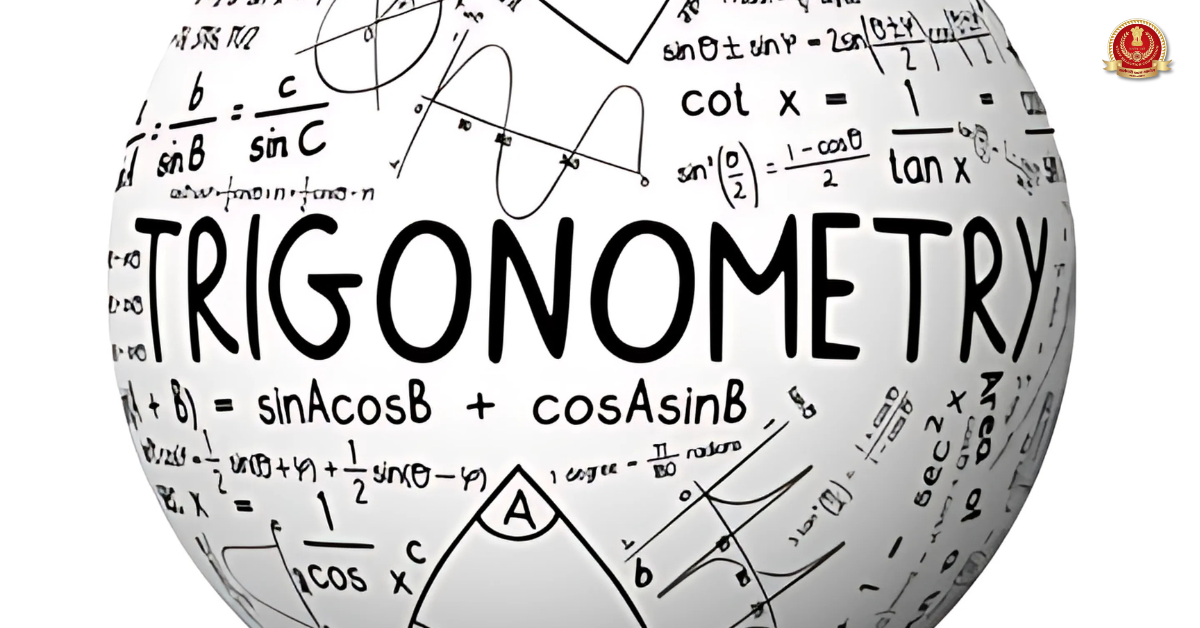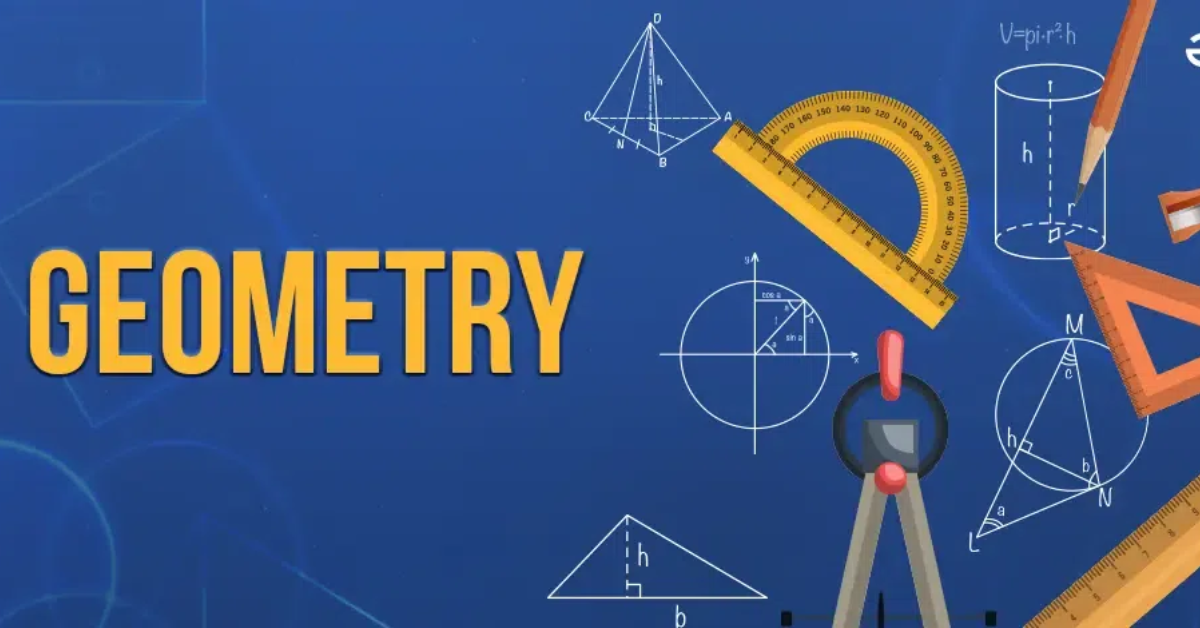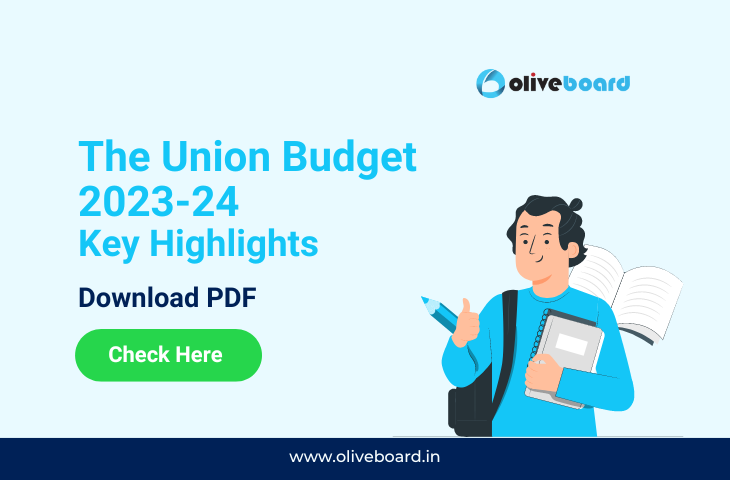The Finance Minister, Smt. Nirmala Sitharaman presented the Union Budget for the fiscal year 2023-24 in Parliament on 1st February 2023 and here we are with the Union Budget 2023 key highlights and ebook. Finance Minister Nirmala Sitharaman has used a ‘Made in India’ tablet computer to deliver a paperless Budget address. She will be presenting her fifth budget, the previous being, 2019, 2020, 2021, and 2022. This year’s buzzword is ‘Saptrishi’ focus areas.
Union Budget 2023-24: Major Takeaways
The Finance Minister Smt Nirmala Sitharaman introduced this year’s budget as the first budget in ‘Amritkaal’. She also stated that the Indian Economy is on the right track and heading toward a bright future and that the budget is a people-centric one, to take on global challenges. There were seven main focuses/pillars of the budget:
- Inclusive development
- Reaching the last mile
- Infra & investment
- Unleashing the potential
- Green growth
- Youth power
- Financial sector
Mrs. Sitharaman named these the ‘Saptrishi’ of the Union Budget 2023. The following are the key highlights of this year’s budget:
- A growth of 7% is estimated.
- The fiscal deficit reduced to 6.4%
- Capital expenditure up 33%, to be of Rs. 10 lakh crores.
- The Agri sector credit target increased to Rs 20 lakh crores.
- The new tax regime will be the default. People have the option to choose the old regime benefits too.
- No tax for income up to Rs. 3 lakh/year
- Income tax slabs reduced from 6 to 5
- Reduced the highest surcharge rate from 37% to 25%
- Tax exemption on income of boards for housing, and other activities.
About the Union Budget of India
The Union Budget is an annual financial report of India. It contains the Government’s revenue and expenditure for a fiscal year, which runs from April 1 to March 31. It comprises the revenue budget and the capital budget and also contains estimates for the next fiscal year. The government presents the budget every year before the start of the financial year. Read more...
Union Budget 2023 facts and figures will be extremely important for all the upcoming exams in 2023 such as SBI PO and Clerk, IBPS PO and Clerk, RBI Grade B Officer and Assistant, SSC CGL, SSC CHSL, SSC CPO, IBPS RRB PO, Railways RRB, SEBI and more.
Economic Survey 2023: Key Points
Finance Minister Nirmala Sitharanam tabled the Economic Survey 2022-23 in parliament today(31-01-2023) before presenting the budget 2023.
Union Budget 2023-24 – Highlights from the Budget Speech by FM Nirmala Sitharaman
Agriculture
- Atmnanirbhar Clean Plant Programme: To improve the availability of clean, disease-free planting material. Outlay: Rs. 2,200 crores.
- 11.4 cr farmers for Rs. 2.2 trillion in cash
- Empowerment of women through SHGs focussed on raw material supply, branding and marketing of products, etc.
- A global hub of millets; the Indian Institute of Millet Research to be supported as the center of excellence.
- PM Vishwakarma Kaushal Samman, PM Vikas: Package of assistance for artisans and craftspeople. Enable them to improve the quality, scale, and reach of products and integrate them with the MSME value chain.
- Financial Support
- Advanced skill training
- efficient brand promotion
- digital payments
- social security
- Technology in Agriculture: Computerization of 63,000 primary agri credit societies. Investment: Rs. 2,516 crores.
- Agriculture Accelerator fund: young entrepreneurs in rural areas
- Collaboration between farmers, state
- The scheme under PM Garib Kalyan Ann Yojna is for free foodgrains to all Antyodaya and priority households for one year w.e.f 1st January 2023.
- The agricultural credit target – is up to 20 lakh cr. with a focus on animal husbandry, dairy, and fisheries.
- New subscheme of PM Matsya Sampada Yojna – targeted investment of Rs. 6000 crores enable activities of fishermen, fish vendors
- For farmers, esp small and marginal farmers, a Co-operative based economic development model
- New Ministry of Cooperation to realize the vision of Sehekar se Samriddhi – Rs. 2516 crores
- National Cooperative Database for nation-wide mapping of cooperative societies
Health Education and Skilling
- 157 new nursing colleges in a core location with existing 157 medical colleges
- Mission to eliminate sickle cell anemia by 2047 – universal screening of 7 cr people (age 0-40 years)
- Facilities in select ICMR labs for encouraging collaborative research
- New Pharma program to promote R&D in pharmaceuticals
- Dedicated multidisciplinary courses for medical devices
- Teachers training re-envisioned
- National digital library for children and adolescents
- National Book Trust, Children book trust- provide non-curricular titles in regional languages and English to cover the gap in reading due to pandemic
- Collaboration with NGOs to inculcate literacy
- Aspirational Blocs program- saturation of essential govt services across various domains
- Pradhan Mantri Primitive, Vulnerable Tribal Groups Development Mission- empowering tribal groups with safe housing, connectivity, and healthcare – Rs. 15000 crores
- Eklavya Model Residential Schools – recruit 38,800 teachers and support staff for the 740 Eklavya Model Residential Schools reaching up tp 3.5 lakh tribal students
- Upper Bhadra Project – central assistance of 5,300 cr for drought-prone areas of upper Karnataka.
- PM Awaaz Yojna – outlay enhanced from 66% to Rs. 79,000 crores
- Bharath Shared Repository Inscriptions – digitization of 1 lakh ancient inscription
- Support for poor prisoners – for those who are unable to afford bail amounts and fines
Infrastructure and Private Investment
- Capital Investment Outlay – increased by 33% to 10 lakh cr (3.3% of GSP)
- Support to State Govt for capital investments – 50 yr interest-free loan to state govt extended for one more year, the outlay of Rs. 1.3 lakh crores
- Railways – a capital outlay of 2.40 lakh cr: highest (9x from 2013-14)
- 100 infra projects identified – Rs. 75,000 crores including Rs. 15000 crores from private sources.
- 50 additional airports, heliports, water aerodromes, and advanced landing grounds revived
- Digilocker for businesses: PAN will be used as a common business identifier.
- Cities and towns to be enabled to 100% transition of sewers and septic tanks from manhole to machine hole mode.
Natural Energy
- India heading for net zero Panchamrit goal by 2070.
- 35,000 cr priority capital for the energy transition
- Battery energy storage of 4000MWH to be supported.
- 1 crore farmers to get assistance to adopt natural farming
- Green Credit Programme
- 83 bn central support for Ladhakh energy
- PM Pranam for
- 10000 bio input centers
- MISHTI – Mangrove Initiative for Shoreline Habitats and Tangible Income – MNREGA CAMPA funds integrated
- Amrit Darohar- Encourage optimal use of wetlands, ecotourism, and income generation for local communities
- Coastal Shipping promotion
- Vehicle Replacement for old polluting vehicles including those of the central govt
- National Hydrogen Mission – Rs 19,700 crore allocated to the National Hydrogen Mission. Objective: hydrogen production capacity of 5 metric million tonnes by 2030.
Youth
- PM Kaushal Vikas Yojna 4,0: Skill training for lakhs of youth within next 3 yrs, on-the-job training
- New age courses – coding AI IOT 3D Printing, drones,
- 30 Skill India International Skilling Centers
- Unified skill India Digital Platform
- Stipend support to 47 lakh youth – National Apprenticeship Promotion Scheme
- 100 labs for developing apps using 5G services will be set up in engineering institutions.
Tourism
- 50 destinations for tourism
- Enhance tourist experience
- Every destination developed as a complete package
- Sector-specific skilling – Dekho Apna Desh
- Unity Mall – One District One Product
Financial Sector
The budget proposals for the financial sector will be in two parts:
Part A
- Credit guarantee for MSMEs: Revamped scheme takes effect with an infusion of Rs. 9000 crores
- Fiscal support for digital public infrastructure
- Additional collateral-free guarantee credit of 2 lakh cr of rupees cost of credit -1%
- National Financial Information Registry – a central repository of financial and ancillary information
- Financial Sector regulators will carry out a comprehensive review
- To enhance business activities in IFSC
- Delegating Powers to the IFSCA
- Single window IT system for registration and approval of IFSCA, SEZ authorities, GSTN, RBI, SEBI, IRDAI
- Permitting acquisition financing
- Amending IFSCA Act
- Data Embassy for countries looking for digital continuity solutions in GIFT IFSC
- Improving governance and investor protection in the banking sector – Banking Regulation Act, Reserve Bank of India Act, Banking Companies Act amendments
- SEBI to regulate and enforce awarding of diplomas
- Senior citizens saving scheme limit doubled to 30 lakh
- Mahila Samman Bachat Scheme for women with 7.5% interest. Savings of up to 2 lakhs for 2 years.
- Fiscal deficit of states
- The fiscal deficit revised to 6.4%
- Fiscal deficit next year: 5.9% of GDP. Aiming to reduce to 4.9% by 2026.
Part B
- Indirect taxes:
- Simplified tax structure
- Reduce basic custom duty rates from 21 to 13%
- Expemt excise duty on GST paid CNG
- Customs duty exemptions for green mobility – Li-Fe batteries
- Taxes on cigarettes increased by 16%
- Chemicals and petrochemicals – exempt from basic customs duty on denatured ethyl alcohol and acid-grade fluoro spar from 5% to 2.5%. Crude glycerine
- Electronics
- Increased to 31 crore units valued at Rs. 2,75,000 cr in 2022-23
- Relief to customs duty for mobile phone parts extended for one more year
- Reduce customs duty for TV parts
- Direct Taxes
- Tax receipts for the next fiscal budgeted at Rs. 23.3 lakh crore.
- MSMEs and professionals: With cash receipts <5%, presumptive tax limits increased to Rs 3 crores (turnover) and Rs 75 lakh (income) respectively
- New IT return form for easier filing
- Higher TDS Limit for Rs. 3 crore
- 100 JT Commissioners for small tax disputes
- Lower taxes on higher digital payments
- High-value insurance policies: Returns will be taxed and capital gains on the sale of property for over Rs 10 crore will be higher
Personal Income Tax
- Benefit hard-working middle class
- The rebate limit increased to 7 lakhs for income tax – no tax needs to be paid
- Tax structure changed
- 0-3 lakh: nil
- 3-6 lakhs: 5%
- 6-9 lakh: 10%
- 9-12 lakh: 15
- 12-15 lakh: 20
- >15 lakh: 30%
- Pensioners
- The benefit of the standard deduction
- Income of >=5 lakh
- The benefit of the standard deduction
- Highest tax rate – 42.7%, reduce the higher surcharge from 375 to 25% in the new tax regime, maximum rate reduced to 39%
- Limit of tax exemption on leave encashment: increased to 25 lakh rupees
- New income tax regimes made default. Can still choose from older regime benefits
Union Budget 2023-24 Key Highlights: Download the Free ebook
Here we have compiled the key points from the Budget 2023-24. This is very helpful for exams like SSC, IBPS, SBI, LIC, UPSC, etc.
How To Download The Budget 2023-24 free e-book?
Step 1: Click on the download link which will take you to Oliveboard’s FREE E-Books Page.

Step 2: Register/Login to the Free E-Books Page of Oliveboard (It is 100% free, You just enter your valid email ID and a password to be able to download the Budget 2023-24 free pdf.
Step 3: After Logging in, you will be able to download the free e-book.
Conclusion
These are the major highlights from the Union Budget 2023-24. The first budget session will conclude on 13th February 2023. Parliament will then reconvene on the 12th of March for the second session and conclude on the 6th of April 2023. For a rundown of the budget:
Frequently Asked Questions
The Union Budget for 2023-24 was announced on 1st February 2023.
The union budget mainly covers the major capital expenses and investments for one fiscal year.
The fiscal year in India spans from the 1st of April to the 31st of March of the next year.
The Union Budget is presented by the Finance Minister on the first day of February.
Smt. Nirmala Sitharaman, India’s Finance Minister will be presenting the Union Budget for 2023-24.
- Why is The SSC CGL Called a Mini IAS?

- Important Number System Questions for SSC Exams, Practice Here

- Trigonometry Questions For SSC CGL 2025, Solve Important Questions

- How to Prepare for SSC CGL with Full Time Job? Get Complete Guide

- 40 Geometry Formulas PDF – Download Here

- RRB ALP Mock Test 2025 Official Link , Know How to Solve

